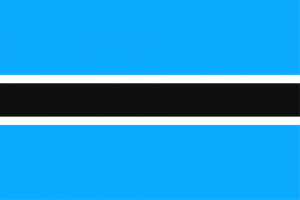Difference between revisions of "Language/Tswana/Grammar/Gender"
m (Quick edit) |
m (Quick edit) |
||
| Line 58: | Line 58: | ||
|description=In this lesson, we will learn about the gender rules in Tswana. We will look at how to identify the gender of nouns and how to use them correctly in sentences. | |description=In this lesson, we will learn about the gender rules in Tswana. We will look at how to identify the gender of nouns and how to use them correctly in sentences. | ||
}} | }} | ||
==Related Lessons== | |||
* [[Language/Tswana/Grammar/Gender|Gender]] | |||
* [[Language/Tswana/Grammar/Negation|Negation]] | |||
* [[Language/Tswana/Grammar/Conditional-Mood|Conditional Mood]] | |||
* [[Language/Tswana/Grammar/Questions|Questions]] | |||
* [[Language/Tswana/Grammar/Plurals|Plurals]] | |||
* [[Language/Tswana/Grammar/Adjectives|Adjectives]] | |||
* [[Language/Tswana/Grammar/Pronouns|Pronouns]] | |||
{{Tswana-Page-Bottom}} | {{Tswana-Page-Bottom}} | ||
Revision as of 21:19, 25 February 2023
Hi Tswana learners! 😊
In this lesson, we will learn about the gender rules in Tswana. We will look at how to identify the gender of nouns and how to use them correctly in sentences. Let's get started!
Gender is an important part of Tswana grammar. Nouns in Tswana are either masculine or feminine. This means that when you use a noun in a sentence, you must use the correct gender form. For example, if you want to say "the cat", you must use the feminine form of the word for "cat".
In Tswana, there are some rules that can help you identify the gender of a noun. Here are some of the most common rules:
- Nouns ending in -a are usually feminine.
- Nouns ending in -o are usually masculine.
- Nouns ending in -e are usually masculine.
- Nouns ending in -i are usually feminine.
However, there are some exceptions to these rules. For example, some nouns ending in -a can be masculine, and some nouns ending in -o can be feminine. To make sure you use the correct gender form, it is best to consult a dictionary.
Once you know the gender of a noun, you must use the correct form when using it in a sentence. Here are some examples of how to use nouns with the correct gender form:
|| Tswana || Pronunciation (IPA) || English Translation || | mme | [mɛ] | the woman | | rra | [rɑ] | the man | | kgomo | [kɡomɔ] | the cow | | ntate | [ntatɛ] | the father | | mma | [mmɑ] | the mother | | tlhogo | [tlhɔgɔ] | the dog |
It is also important to note that some nouns can be used with either gender form. For example, the word for "teacher" can be used with either the masculine or the feminine form.
|| Tswana || Pronunciation (IPA) || English Translation || | motswalle | [mɔtswɑlɛ] | the teacher (masculine) | | motswalle | [mɔtswɑlɛ] | the teacher (feminine) |
Now let's practice! Try to identify the gender of the following nouns:
- kgosi
- mma
- tlhogo
- ntate
- mme
- rra
Answers:
- kgosi (masculine)
- mma (feminine)
- tlhogo (masculine)
- ntate (masculine)
- mme (feminine)
- rra (masculine)
Now you know the basics of Tswana gender! To improve your Tswana Grammar, you can also use the Polyglot Club website. Find native speakers and ask them any questions!
➡ If you have any questions, please ask them in the comments section below.
➡ Feel free to edit this wiki page if you think it can be improved. 😎
Related Lessons
